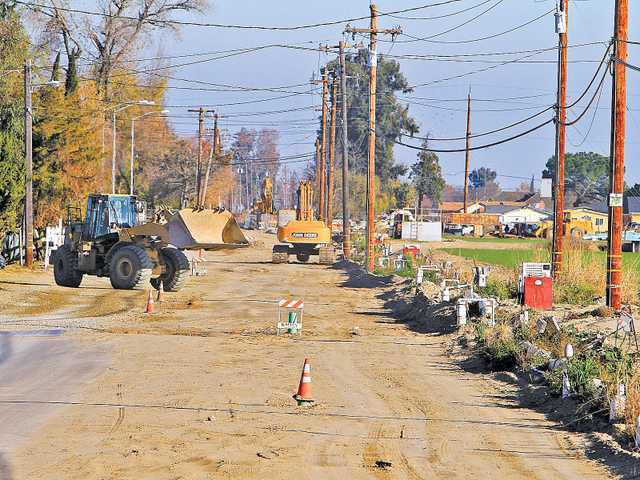It’s a line that will help flush 20,000-plus toilets.
That is what work now in progress along portions of Woodward Avenue ultimately will do.
The $9 million undertaking is officially dubbed the “Woodward Avenue Utilities and Street Improvement Project.” What it actually does is open the door for development - primarily residential growth - south of the 120 Bypass for the next 20-plus years.
When the work is done in late 2012, some 2.5 miles of Woodward Avenue west of Main Street will have been transformed from a narrow, two-lane country road to broad tree-lined, two-lane street complete with a landscaped median featuring even more trees.
“The project is pretty much on schedule,” noted Public Works Director Mark Houghton.
The project entails putting in place a major sewer trunk, storm system lines, and street improvements on Woodward between South Main Street and a point roughly midway between McKinley Avenue and Airport Way. The road also will be rebuilt as the last phase of the project. The work also includes 6,610 linear feet of median curbing or more than 1.2 miles of landscape planters that will have 146 trees planted in them. The contractor - Clovis-based Floyd Johnston Construction - will also restore 69 private driveways and replace 950 feet of private fence by the time all of the work is completed.
It ranks as the second most expensive Manteca public works undertaking of the past five years. It is topped only by the $19 million final phase of the retrofit and expansion of the wastewater treatment plant in 2009. While ratepayers and growth paid for the last phase of the treatment plant work, 100 percent of the tab for the Woodward Avenue work is coming from growth fees. Manteca borrowed $9 million from the Public Facilities Improvement Plan transportation accounts paid for by growth to fund the project. Fees collected from future growth will repay the loan plus interest at a fixed annual rate of 2 percent.
The decision to do all the work at once means the road will only have to be disturbed once for major utilities. The water line and fire hydrants have been in place for more than a decade.
Preparing to accommodate 20,000+ additional toilets



